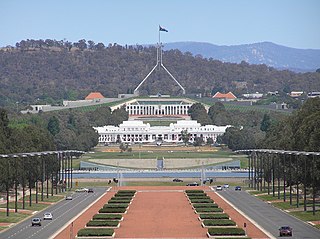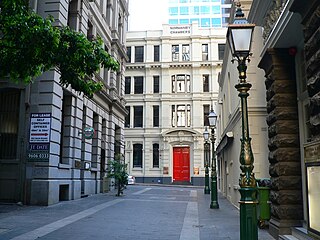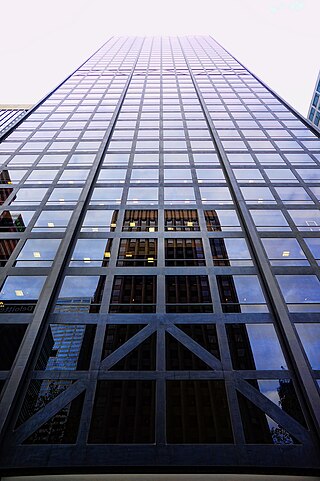Related Research Articles

Walter Burley Griffin was an American architect and landscape architect. He designed Canberra, Australia's capital city, the New South Wales towns of Griffith and Leeton, and the Sydney suburb of Castlecrag.

The City of Banyule is a local government area in Victoria, Australia in the north-eastern suburbs of Melbourne. It was created under the Local Government Act 1989 and established in 1994 as an amalgamation of former councils. It has an area of 63 square kilometres (24.3 sq mi) and lies between 7 and 21 km from central Melbourne. In 1994 it had a population of 116,000. In June 2018 Banyule had a population of 130,237. The Yarra River runs along the City's southern border while its western border is defined by Darebin Creek.

Heidelberg is a suburb of Melbourne, Victoria, Australia, 11 kilometres (7 mi) northeast of Melbourne's central business district, located within the City of Banyule local government area. Heidelberg recorded a population of 7,360 at the 2021 census.

Yarrambat is a town in Victoria, Australia, 24 km north-east of Melbourne's Central Business District, located within the Shire of Nillumbik local government area. Yarrambat recorded a population of 1,602 at the 2021 census.

Marion Mahony Griffin was an American architect and artist. She was one of the first licensed female architects in the world, and is considered an original member of the Prairie School. Her work in the United States developed and expanded the American Prairie School, and her work in India and Australia reflected Prairie School ideals of indigenous landscape and materials in the newly formed democracies. The scholar Deborah Wood stated that Griffin "did the drawings people think of when they think of Frank Lloyd Wright ." According to architecture critic, Reyner Banham, Griffin was "America’s first woman architect who needed no apology in a world of men."

South Geelong, also referred to as Geelong South, is a southern suburb of Geelong, Victoria, Australia. Its local government area is the City of Greater Geelong. At the 2016 census, South Geelong had a population of 993.

La Trobe Street is a major street and thoroughfare in the Melbourne central business district, Victoria, Australia. It runs roughly east–west and forms the northern boundary of the central business district. The street was laid out as an extension of the original Hoddle Grid in 1839 and was named after Charles La Trobe. La Trobe Street extends from Victoria Street in the east to Harbour Esplanade in the west.

Bear's Castle is a small faux castle constructed in approx 1846 in Yan Yean, Victoria, Australia.

Eaglemont is an established suburb of Melbourne, Victoria, Australia, 10 km north-east of Melbourne's Central Business District, located within the City of Banyule local government area. Eaglemont recorded a population of 3,960 at the 2021 census.

John Smith Murdoch was a Scottish architect who practised in Australia from the 1880s until 1930. Employed by the newly formed Commonwealth Public Works Department in 1904, he rose to become chief architect, from 1919 to 1929, and was responsible for designing many government buildings, most notably the Provisional Parliament House in Canberra, the home of the Parliament of Australia from 1927 to 1988.

Bank Place is a street in the Melbourne central business district, Australia. It is a laneway running roughly north-south between Collins Street and Little Collins Street.

Wollert is a suburb in Melbourne, Victoria, Australia, 26 km north of Melbourne's central business district, located within the City of Whittlesea local government area. Wollert recorded a population of 24,407 at the 2021 census.

140 William Street is a 41-storey steel, concrete and glass building located in the western end of the central business district of Melbourne, Victoria, Australia. Constructed between 1969 and 1972, BHP House was designed by the architectural practice Yuncken Freeman alongside engineers Irwinconsult, with heavy influence of contemporary skyscrapers in Chicago, Illinois. The local architects sought technical advice from Bangladeshi-American structural engineer Fazlur Rahman Khan, of renowned American architectural firm Skidmore, Owings & Merrill, spending ten weeks at its Chicago office in 1968. At the time, BHP House was known to be the tallest steel-framed building and the first office building in Australia to use a “total energy concept” – the generation of its own electricity using BHP natural gas. The name BHP House came from the building being the national headquarters of BHP. BHP House has been included in the Victorian Heritage Register for significance to the State of Victoria for following three reasons:

John Beswicke (1847–1925) was an architect who practiced in Melbourne between the 1870s and 1915.

Niel Black was a successful Australian colonial pastoralist and one of Australia’s early politicians, a member of the Victorian Legislative Council.
The Rice House is a residence located at 69 Ryans Road, Eltham, Victoria, Australia, built from 1952-53. Designed by Melbourne architect Kevin Borland for a young couple, whose open mindedness and excitement for progressive/alternative ways of living allowed quite a different archetype for housing, the house is notable for its unusual construction technique and use of materials. Rice House was the first experiment of three architectural explorations in Melbourne.
Oakden, Addison and Kemp was an Australian architectural firm in Melbourne, Victoria. While it was short lived, existing from only 1887 to 1892, they designed a number of outstanding projects, and all three members designed many more notable projects in earlier and later partnerships.
Heidelberg Historical Society is a museum and research organisation devoted to the local and community history of Heidelberg and surrounding areas in the north-eastern suburbs of Melbourne, Victoria, Australia.
The Glenard Estate, Eaglemont, is a residential estate designed by Walter Burley Griffin and Marion Mahony Griffin in 1915. They were commissioned by grazier, Peter Keam to lay out the estate on land he owned after his initial commission to lay out the neighbouring Mount Eagle Estate the previous year. The Glenard Estate is the second earliest garden suburban subdivision designed by the Griffins in Australia, predating Castlecrag in Sydney (1924) by nine years.
Augustus Andrew Fritsch (1866-1933), known as A. A. Fritsch, was an Australian architect best known for a series of Romanesque Revival style red brick Roman Catholic churches built across Victoria from the 1900s to the 1920s.
References
- ↑ "Pholiota". vhd.heritagecouncil.vic.gov.au. 26 June 2007. Retrieved 25 May 2020.
- ↑ "Lippincott House". vhd.heritagecouncil.vic.gov.au. 21 August 2006. Retrieved 25 May 2020.
- ↑ "Knitlock patent plan drawing Figs 6-11, ca. 1917, [2][picture]". nla.gov.au. Retrieved 25 May 2020.
- ↑ "Knitlock Bricks". National Museum of Australia. Retrieved 25 May 2020.
- ↑ "[Knitlock patent plan drawing Figs 1-5][picture]". nla.gov.au. Retrieved 25 May 2020.
- ↑ Rickard, David; Tosin, draftsperson.), Pau; Gail, draftsperson.), Wayn; Griffin, architect.), Walter Burley (1985), Pholiota of Heidelberg , retrieved 25 May 2020
{{citation}}: CS1 maint: multiple names: authors list (link) - 1 2 Melbourne, Graham Reilly, University of (20 September 2016). "Pholiota: The tiny house with big ideas". Pursuit. Retrieved 25 May 2020.
{{cite web}}: CS1 maint: multiple names: authors list (link) - ↑ "YouTube". www.youtube.com. Retrieved 25 May 2020.
37°45′51″S145°04′06″E / 37.76419°S 145.06843°E